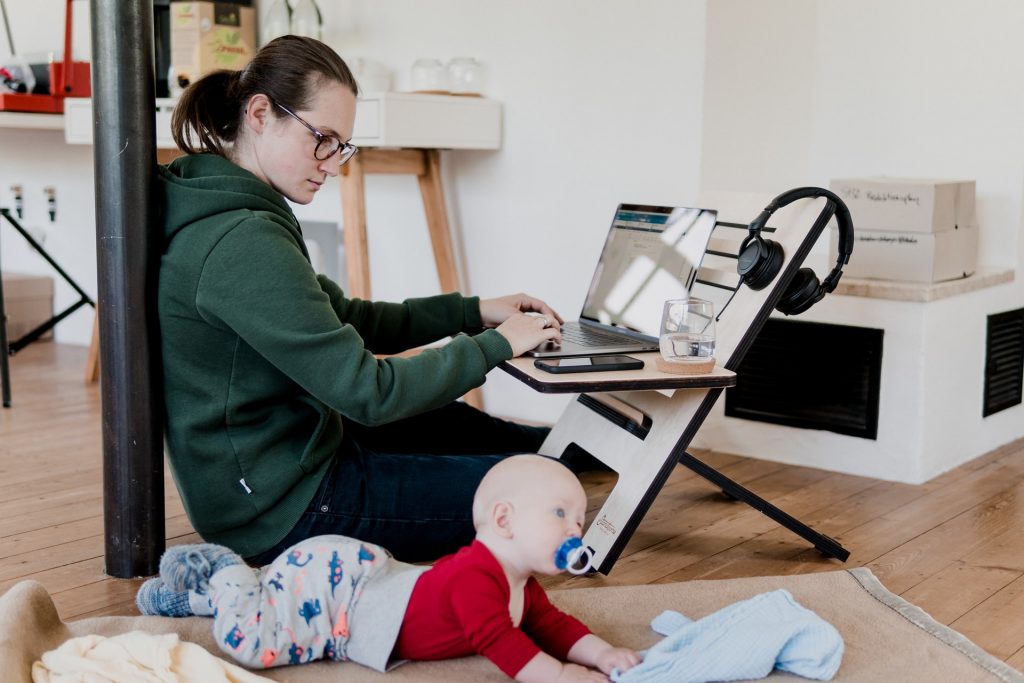
By: Terri Hopkinson, a Laurier Institution Blog Contributor
For a lot of office workers, this month marks one year of working from home due to COVID-19 restrictions and guidelines. It was a steep learning curve this time last year to get employees up and running with remote work but there is still more to learn. In this unprecedented environment, many employers may be overlooking the new challenges of a virtual environment that stand in the way of inclusivity. Now that we’ve got a new standard for how we work, it’s time to look at our individual teams and find out what we can do better. Here are 7 ideas for how you can start building an accessible, diverse, and inclusive virtual workplace.
1. Provide Accessible Tools, Technology, and Workspaces

The accessibility of any given workplace often lies in the resources provided to an employee. Not only does this mean physical equipment, but software and digital accommodations as well. In the physical realm, work-from-home ergonomics can make a huge difference not only in the long-term health of a desk worker but in the accessibility of that workspace. As it is in an office, desk setup including the chair, monitor position, etc. can mean the difference between a comfortable day and a day spent in pain. For virtual meetings, accessibility may mean more than a webcam, a headset, and video call software. Accommodations like screen readers and live captioning may be necessary. Making both audio and visual options available for meetings is a simple way of making them more accessible.
2. Keep Different Communication Styles in Mind

Both in-person and virtually, each individual has a different style of communication. For a plethora of reasons, some people will prefer video calls over emails and vice versa. It can be hard to interpret tone via email and for this reason, some people may prefer the clarity a video call provides. Others, perhaps those who speak English as a second language, may find it easier to communicate in writing. A mix of both may be the way to go. We all know the expression “this meeting could have been an email” but face-to-face communication is also important for staying connected in a virtual workspace.
3. Encourage Participation in Virtual Meetings

We’ve all been in a meeting where one or two voices speak over all the rest. Perhaps a man is speaking over a woman, a white person is speaking over a minority, or simply an extrovert is speaking over an introvert. It is a complicated problem rooted in larger social problems, but put simply, when not every person gets to speak we lose the diversity of a group and therefore we lose its potential. Of course, this problem occurs both in person and in virtual meetings but here are a few ideas for how to make sure everyone gets a chance to participate in a virtual space.
- Ask a question and get every attendee to answer
- Pin the intended speaker’s video
- Use the “hand raise” function
- Ask each member of the team to lead a portion of the meeting or rotate through meeting chairs
- Follow up individually after the meeting if you feel someone’s perspective was lost
4. Don’t Neglect the Watercooler

It’s a sitcom staple for a reason; everyone in an office spends some amount of time chatting around the proverbial watercooler. It’s where you meet people from different departments and where you learn the names of your colleagues’ pets. These moments are often the pivot on which an office social scene rests. After-work happy hours are planned in these moments. Invitations to join the office softball team come in these moments.
A big portion of feeling included in a workplace comes from these more casual social aspects. They foster a sense of acceptance that may not come from the drier, more isolated parts of the day. People are more likely to collaborate with colleagues they know personally and, without an inbuilt spot to get to know each other, people can get overlooked.
Virtual environments don’t cater to incidental communication. You can’t bump into someone over Zoom or buy a colleague a coffee via email. So, we must build these moments into our day on purpose. Here are a few ideas of how to do that:
- Schedule a weekly or monthly after-work virtual Happy Hour
- Have a virtual lunch buddy
- Allow for more time spent on personal chat in your regular meetings
- Use team-building exercises and games
- Pencil in time to chat with quieter colleagues and new hires
5. Allow Flexible Hours

Some jobs require particular hours to be kept. Customer-facing roles of course need to be available during open hours. But, this is not the case for a lot of office-based jobs. Allowing for more flexible hours means that a lot of people who have difficulty working the standard Dolly Parton-esque 9 to 5 will be able to work. If working hours are flexible, parents of young children will be able to trade off care with their partner, work school hours and after bedtime, or otherwise adjust their schedule to their needs. The same is true of those with chronic pain, fatigue, and other physical and mental issues not conducive to an 8-hours-in-a-row day.
Even those without mitigating circumstances could benefit from a flexible schedule. Everyone has times of day where they’re more or less productive, allowing them to harness those times will result in greater productivity not lesser. As long as work is getting done and meetings can be scheduled, why prevent people from doing their best work? Gone are the days where office work needed to be done in an office, so why must that work be done during office hours?
6. Improve Your Work-From-Home Policies

The biggest buzzword of the past year has been “the new normal” and for good reason. The pandemic has shone a light on a lot of the shortcomings of modern society. One thing that has been made clear is that a majority of companies are too rigid about employees working remotely. Antiquated assumptions about productivity (or lack thereof) and the underestimation of both employees and technology get in the way of what could be a major bump up in quality of life.
There are many people who could benefit from the advantages of working from home. For example, busy parents could reclaim the time usually dedicated to commuting for their families or themselves. However, there are also people for whom working from home is a necessity and not just a convenience. Disabled people have been advocating for years to be able to work remotely but their chances of being hired are drastically lower than those who are able to regularly come to the office.
By improving work from home policies for a post-COVID world, you will improve the diversity of your workforce.
7. Ask Your Team What They Need

This may be the most obvious one, but it’s the most important as well. You’re not a mind reader and you can’t anticipate everyone’s needs. While your team knows this, they may be hesitant to speak up about what would help them during this time. Make it clear to them, explicitly, that you are open to their ideas and are available to help. This can be brought up in a meeting (in fact, this may be the best approach so no one feels singled out) and a discussion with the whole team may solve communication-based issues, but also make it clear that you are available to speak one-on-one or by email afterward. You may be surprised at what simple changes can do to help someone produce their best work virtually.


